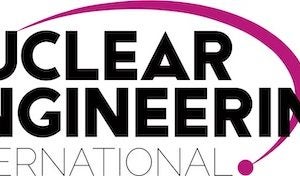The major cause of the stagnant load (capacity) factors at Japan’s domestic nuclear power plants (NPPs) has been long outage duration, says Toshihiro Okajima, project leader at JAIF’s Department of Information & Communication. In recent years, the reasons for that have gone beyond temporary influences such as earthquakes, and have also included various prevailing conditions, such as the substantial maintenance requirements and the time needed to restart NPPs after problems occur.
The average Japanese refuel outage duration is 98 days, according to Tadahisa Nagata. This is more than double the refuel outage length in the USA and South Korea (which was 42.6 days in 2005). Nagata says one reason for the longer outages is that the Japanese regulator does not permit online maintenance; equipment must be maintained during planned refueling outages. (However, he notes that the Japanese regulator and utilities have recently started to reconsider maintenance frequency and the introduction of online maintenance.)
Another key reason has been the shorter operating cycle of Japan’s NPPs than those of many other countries. The operating cycle length in Japan is 13 months compared with 18.4 months in the USA, according to the latest figures available from 2008, Nagata says (see also Table 1).
In addition, IAEA-PRIS data provided by Okajima (Table 2) shows that the average operating cycle length and average outage duration in the USA have been decreasing since 1990, while in Japan they have remained relatively constant.
Nagata discusses the role of outages in “Performance of Japanese nuclear power plant based on open data and information,” a Japanese-language report to the Japan Society of Maintenology; an English translation of this paper is planned.
Figures 1-3 (taken from Nagata’s report) show the availability and average outage durations for the period January 1999 to March 2009. Japanese data has been taken from JNES reports on the Operational Status of Nuclear Facilities; US data is from the US-NRC Power Reactor Status Report. Kashiwasaki-Kariwa units are excluded.
Nagata and Ken-ichiro Sugiyama from Hokkaido University have also evaluated the performance of Japanese nuclear power plants based on public data (presented at ICONE18 in May 2010, paper ICONE18-29703). They found that although the failure rates at US nuclear power plants were higher than at Japanese NPPs, periods of failure shutdown are longer in Japan. In both countries, the failure modes during operation are early failure (infant mortality) modes. The authors suggest that excessive preventative maintenance in Japan might actually increase early failures.
ABWRs are capable of more
In our August issue, we said that the lifetime load factors at Japan’s advanced boiling water reactors (ABWRs) appeared to be extremely low—in the range from 38.1-69.5%. While Okajima from JAIF admits the figures are accurate, he points out that the ABWR outages have been due to earthquakes or turbine system problems. The load factors thus do not reflect the reactors’ true capabilities, he says.
Because the cumulative ABWR operational history has still been relatively short, its outages have had an exaggerated effect on their load factors in recent years. The low load factors, then, can be seen as a temporary phenomenon, and it is unreasonable to draw general conclusions about ABWRs based just upon that, he says.
Damaged turbines (made by Hitachi) were found at Hamaoka 5 and Shika 2 plants. At the Kashiwazaki-Kariwa 6 and 7 plants, damage was also found in turbines (made by GE), though to an extent that would not adversely affect operation. All were caused by the design of the 52-inch turbine blades. A solution has already been found, he says.
At Hamaoka 5, another shutdown was caused by the high hydrogen concentration in the off-gas system (that processes the hydrogen, oxygen, and rare gases that flow into the condenser). Its concentration increased as reactor output was boosted after a restart, owing to a decline in the performance of the catalyst for recombining the hydrogen and oxygen in the system. That was caused by two factors, the manufacturing process of the catalyst and a substance contained in the sealing material used for the turbine system. The same incident took place in other plants including BWRs, like Onagawa 3 and Hamaoka 4. Countermeasures were developed and duly adopted.
The load factors of the Kashiwazaki-Kariwa 6 and 7 NPPs before the 2007 earthquake—over 80%—are more indicative of the real ability of the ABWRs, and are equivalent to those of all Japanese BWRs (62%) and PWRs (78%), he says.
Figure 4 shows the individual load factors at each of the ABWR plants over their operating lives, with major incidents indicated.
Okajima adds that Japan hopes to increase the load factors (of all its NPPs) to 85% by 2020 and 90% by 2030.
Years of operation
Okajima also says that there is no longer any correlation between operating experience and load factor. Back in the early years of nuclear power, when it was a younger technology – i.e., before the 1990s in both the USA and Japan – load factors generally increased with longer operational experience. In the latter half of the 1990s, however, nuclear technology settled into maturity, and that relationship no longer held true. The two data series—load factors by country, Fig 6, p24, August 2010, and the load factor at Kashiwazaki-Kariwa 6 and 7 below—demonstrate that load factors have not always increased with longer operation time.
In the case of South Korea, also, the NPP load factor has exceeded Japan’s despite having a shorter average time of operation. Accordingly, there is no general connection between the length of NPP operation and a higher load factor.
FilesFigures and tables






